81 Weird Animal Facts Everyone Should Know
Impress your friends with mind-blowing trivia about dolphins, koalas, bats, and more.
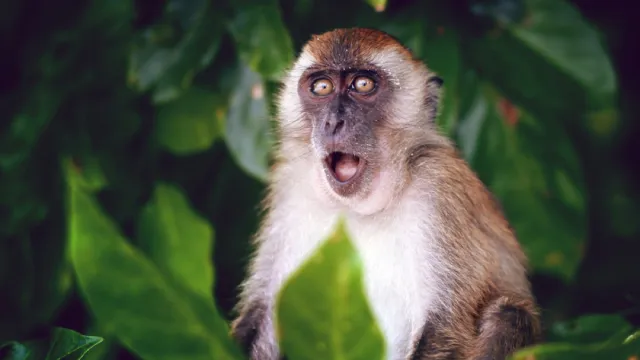
Did you know that the sentence "the quick brown fox jumps over a lazy dog" uses every letter of the alphabet? OK fine, maybe that has more to do with orthography than it does with animals, but it's still worth noting. With over two million identified species on the planet, the animal kingdom is an undeniably diverse place. But while the breadth of earthly biodiversity may be well known, the incredible things our animal counterparts can do are often hidden from humans. From furry creatures you never realized kissed to those who enjoy getting tipsy, read on for animal facts that are sure to wow your friends.
RELATED: 37 Rare Animals So Unusual, You Might Not Know They Even Exist.
Fun Facts About Animals That Will Blow Your Mind
1. Koala fingerprints are so close to humans' that they could taint crime scenes.

Koalas might not seem to have a lot in common with us, but if you were to take a closer look at their hands, you'd see that they have fingerprints that are strikingly similar to those of humans.
In fact, they're so similar when it comes to the distinctive loops and arches, that in Australia, "police feared that criminal investigations may have been hampered by koala prints," according to Ripley's Believe It or Not. Any koalas who want to commit crimes would be wise to do so wearing gloves.
2. Parrots will selflessly help each other out.

Parrots may be associated with pirates, but it turns out African gray parrots are nothing like the infamously greedy, treasure-seeking criminals. Instead, researchers have discovered that the colorful birds will "voluntarily help each other obtain food rewards" and perform "selfless" acts, according to a 2020 study published in Current Biology.
Study co-author Auguste von Bayern noted, "African gray parrots were intrinsically motivated to help others, even if the other individual was not their friend, so they behaved very 'prosocially.'"
3. Prairie dogs kiss.
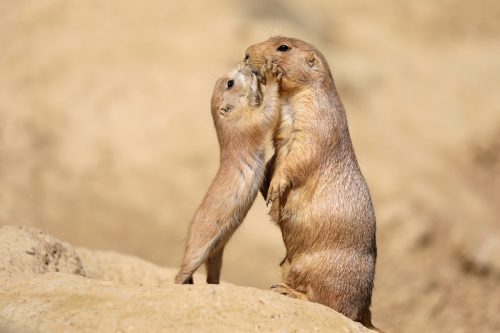
Prairie dogs are quirky creatures for a number of reasons: They're giant rodents, they dig massive interconnected underground homes, and they kiss.
While the animals are actually touching their front teeth to identify each other when they seem to be sweetly sharing a smooch, the BBC explains that scientists believe prairie dogs "kiss and cuddle" more when they are being watched by zoo visitors," because they "appeared to enjoy the attention."
4. Not a lot of animals go through menopause.

Humpback whales, orcas, and human females are the only mammals that undergo menopause. According to researchers, this has less to do with wanting to enjoy those golden years than it does with being available to nurture a daughter's offspring and decrease tensions over limited resources. It's called the "Grandmother Hypothesis" and it's also thought to help improve the fitness of the aging female in question.
5. Chinese water deer swim island to island in search of food.
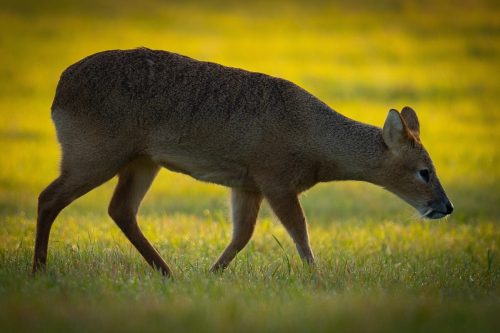
If the name didn't make it obvious enough, let's be clear: Chinese water deer really like water. These critters have been known to swim for up to seven miles before getting tired. It's actually what has allowed them to populate outside of their native environment.
And that's not all there is to learn about these animals. These guys are known for growing fangs instead of antlers. Not only that—a newborn Chinese water deer is so small it can just about fit in the palm of your hand!
6. The bat is the only mammal that can fly.
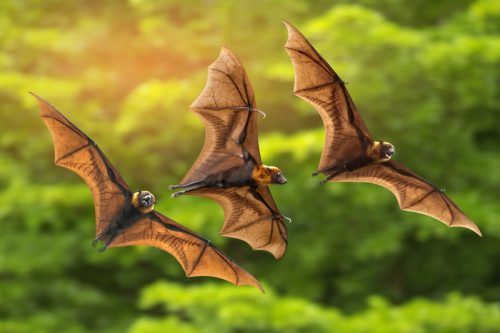
That's right. The bat is the only flying mammal. While some people may be tempted to put flying squirrels on the list, the truth is those guys can only glide for short distances. Meanwhile, the long, flexible skin that extends over a bat's wings, combined with their many movable joints, make bats great fliers.
In fact, these critters are much more comfortable in the air than on land. Because their leg bones are so thin, only two out of the 1,100 species of bats can walk on the ground.
7. Narwhal tusks are really an "inside out" tooth.
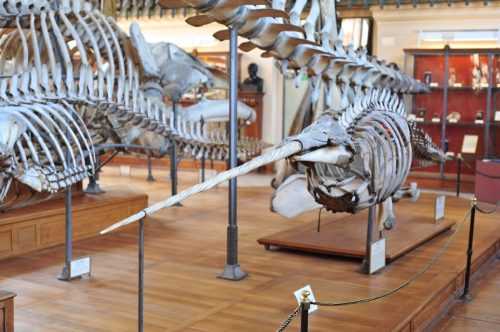
Narwhals are unlike most other whales because they have what appears to be a giant tusk. But that's not actually a tusk at all—what you're seeing is a tooth. If you're looking for a concrete explanation as to why they evolved in this way, you'll just have to sit tight. Even the scientists don't get it.
As Martin Nweeia, a member of the Harvard School of Dental Medicine, told the Smithsonian, "The whole thing that is great about the teeth of the narwhal is that nothing makes sense … The tusks are an extreme example of dental asymmetry."
8. Gorillas can catch human colds and other illnesses.
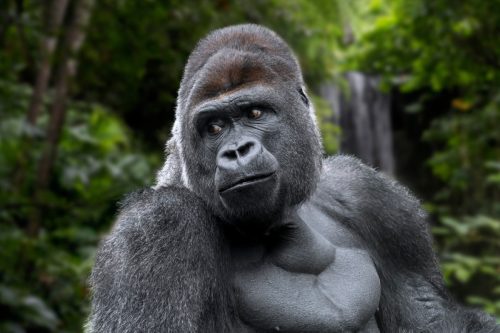
The COVID pandemic has really underscored this point: Scientists have documented multiple instances of human pathogens including rhinoviruses and coronaviruses finding their way into gorillas and other great apes.
9. The oldest evidence of domesticated cats dates back 9,500 years.
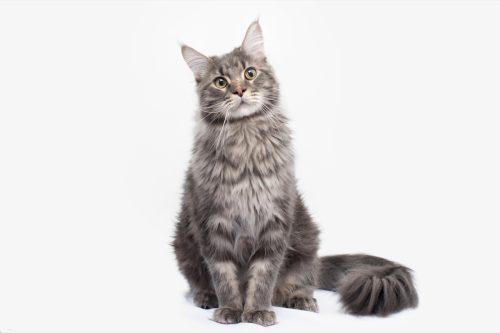
Cats have been hanging around humans for thousands of years. Guinness World Records reports that we've been domesticating cats for 9,500 years.
Proof of this came in 2004 when the bones of a cat were discovered in the neolithic village of Shillourokambos in Cyprus. The position of the cat in the ground was next to the bones of a human, whose similar state of preservation strongly suggests they were buried together.
RELATED: 29 Fun Cat Facts You Never Knew About Your Furry Friend.
10. The blue whale weighs as much as 30 elephants.
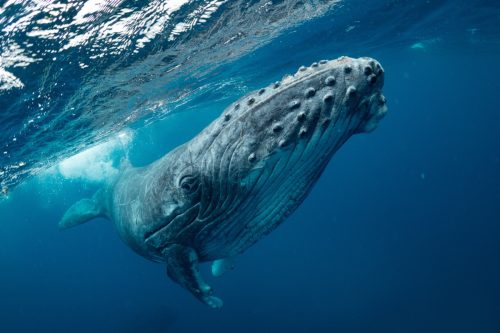
And that's not all. These guys can measure as long as three Greyhound buses, and weigh up to 300,000 pounds. In fact, the blue whale remains the largest animal on Earth.
11. Bottlenose dolphins are even more right-handed than humans.
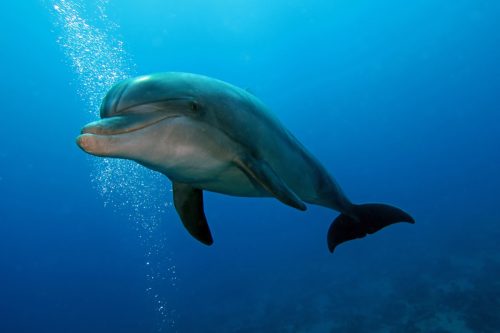
"Most humans (say 70 percent to 95 percent) are right-handed, a minority (say 5 percent to 30 percent) are left-handed," according to Scientific American. And the same holds true for bottlenose dolphins. In fact, the savvy swimmers are even more right-handed than we are.
A team led by Florida's Dolphin Communication Project took a look at the feeding behavior of bottlenose dolphins and found that the animals were turning to their left side 99.44 percent of the time, which "actually suggests a right-side bias," according to IFL Science. "It places the dolphin's right side and right eye close to the ocean floor as it hunts."
12. Polar bears have black skin.

It's true: Their black skin helps absorb the heat from the sun so that they can stay warm while facing Arctic temperatures. This likely helps protect them from harmful UV rays as well.
13. Capuchin monkeys wash their hands and feet in urine.

Monkeys are undeniably cute. They can also be pretty darn gross. Capuchin monkeys, for example, urinate on their hands and feet when they're feeling randy.
"We think the alpha males might use urine-washing to convey warm, fuzzy feelings to females, that their solicitation is working and that there's no need to run away," primatologist Kimran Miller told NBC News. "Or they could be doing it because they're excited."
Either way, ew!
14. Sperm whales in the Caribbean have an accent.

People who come from different areas around the world tend to speak with inflections, fluctuations, and patterns that are specific to their home regions. Apparently, the same can be said for whales.
Researchers from Dalhousie University in Canada and the University of St. Andrews in the UK have found evidence that seems to show whales in the Caribbean have a different "accent" than whales in other oceans.
15. Some pigs in China are the size of bears.
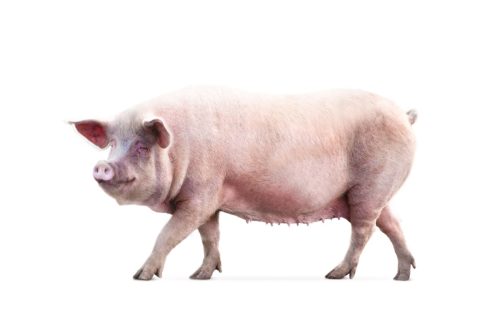
In Nanning, the capital of China's Guangxi province, a man named Pang Cong has a rather remarkable animal living on his farm: a 1,102-pound pig. That's around the same size as a full-grown adult male polar bear.
According to Bloomberg, massive swine of that size "can sell for more than 10,000 yuan ($1,399), over three times higher than the average monthly disposable income" in the area. The statistics are no coincidence, either—almost half the pigs in the world are kept by Chinese farmers.
16. Some snails have hairy shells.
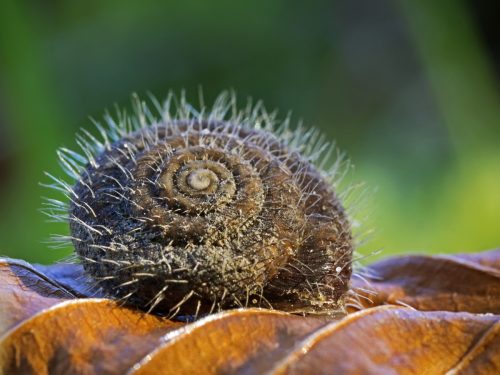
While it's not a secret that snails have shells, you probably didn't know that some actually have hairy shells. These hairs are rather handy to have, as they help a snail stick to wet surfaces, such as leaves.
17. A single strand of spider silk is thinner than a human hair.

These fibers are also five times stronger than steel of the same width. According to the American Association for the Advancement of Science, the silk is actually made up of thousands of nanostrands, measuring just 20 millionths of a millimeter.
18. Baby Tasmanian devils make life-long friendships.
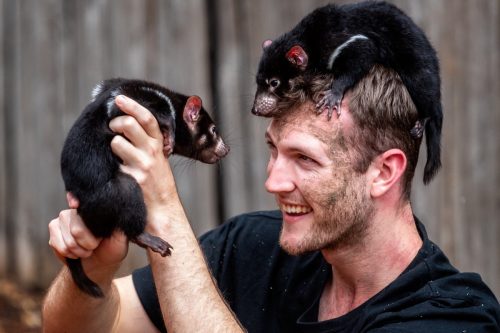
If you have best friends who have been around since you were a child, then you have something in common with Tasmanian devils. Research has shown that Tasmanian devils form bonds when they're young that last for the rest of their lives.
As Zoos Victoria's Marissa Parrott told IFL Science, "In the wild when baby devils leave their mums, we believe they all socialize together." The website adds that "young devils have their own dens," "engage in friendly sleepovers," and when given the chance, they prefer "to share with their … original friends."
19. A grizzly bear's bite is strong enough to crush a bowling ball.

Those who find themselves in the presence of a grizzly bear will surely want to stay out of reach of this animal's super sharp claws. But they'll certainly also want to keep out of the grizzly's mouth, because these creatures have a bite force of over 1,160 pounds per square inch, according to the BBC.
That means grizzly bears can literally crush a bowling ball between their jaws. Yikes!
20. Humpback whales use bubbles to hunt.
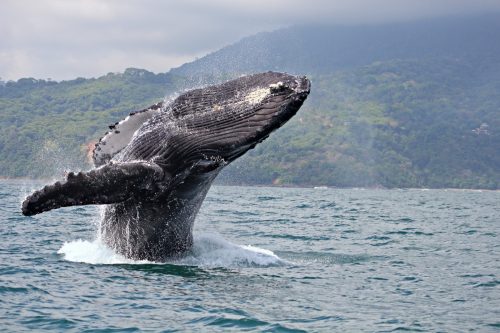
You might think that a whale's massive size is the only edge they'd need when it comes to hunting in the open waters. But humpback whales actually team up to use a bubble-net technique in order to catch their prey.
"Sometimes, the whales will swim in an upward spiral and blow bubbles underwater, creating a circular 'net' of bubbles that makes it harder for fish to escape," Science News reports.
21. A housefly buzzes in an F key.
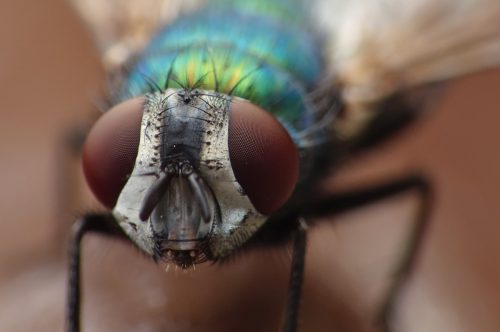
When you hear a housefly buzzing around your home, you might be annoyed by the persistent sound. However, the next time it happens, try to soothe yourself by noting that the airborne pest is actually buzzing in an F key. How melodious!
22. Snakes only eat animals.
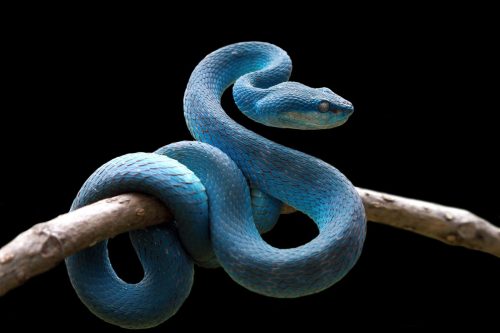
In true carnivore fashion, snakes typically stick to birds, frogs, and other small mammals. No herbs, grass, or bark for any one of the 3,000 species of snakes out there.
23. Moray eels have a second pair of "Alien-style" jaws.
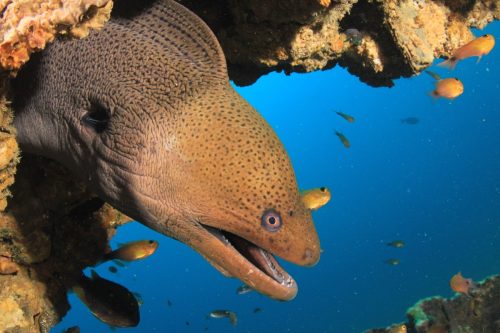
If you already thought that eels were kind of creepy, then this fact isn't going to make you feel any better about them. Moray eels have what's called pharyngeal jaws, which are a second pair of "Alien-style" jaws that are located in the throat and emerge to grasp prey before pulling the unfortunate meal down into the eel's gullet.
24. Ducks can surf.
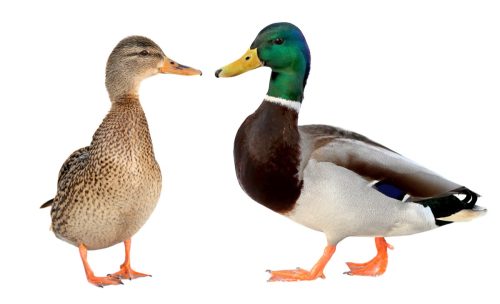
Over in New Zealand, surfers have noticed the same thing those who ride the waves in California have witnessed: Ducks can surf. The birds do so in order to catch food or simply to move through the water quickly.
Sports reporter Francis Malley spotted a female duck and her babies catching a wave and told the New Zealand Herald, "The mother was surfing on her belly on the whitewash. I've never surfed with ducks before so this was a first."
25. Slow lorises are the only venomous primates.

They may be cute, but their bite can kill.
According to Popular Science, these adorable animals secrete toxins from a gland in the crook of their inner arms. Their bites have caused anaphylactic shock and even death in humans. Better watch out!
RELATED: 37 Weird Facts About the Human Body That Will Blow Your Mind.
26. Pigeons can do math.
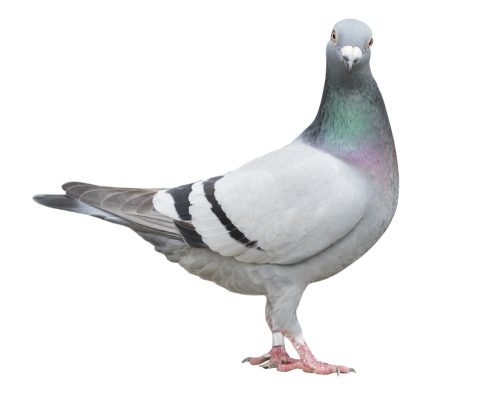
You might think of pigeons as… not that smart. But it turns out, they're actually quite intelligent.
In fact, one 2011 study published in Science found that these birds are capable of doing math at the same level as monkeys. During the study, the pigeons were asked to compare nine images, each containing a different number of objects.
The researchers found that the birds were able to rank the images in order of how many objects they contained. Put simply, they learned that the birds can count!
27. Zebra stripes act as a natural bug repellant.
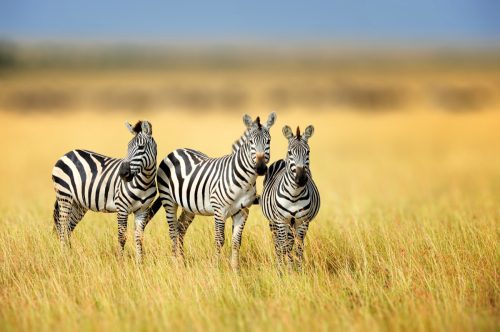
Cows may benefit from artificial stripes, but zebras have the real deal. One 2012 report published in the Journal of Experimental Biology suggests that zebras' black and white stripes may be an evolutionary feature to fend off harmful horsefly bites.
"A zebra-striped horse model attracts far fewer horseflies than either homogeneous black, brown, gray or white equivalents," the researchers wrote.
28. Wild chimps like to drink.
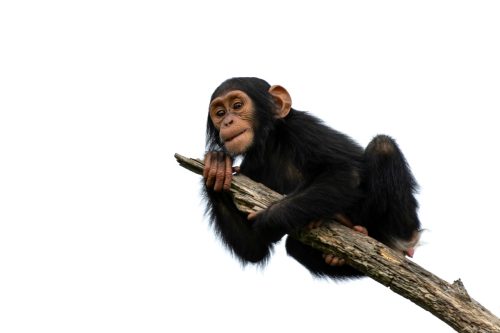
Humans aren't the only animals who enjoy a drink or two. A 2015 study published in the journal Royal Society Open Science reveals that chimpanzees in Guinea had a fondness for imbibing fermented palm sap and getting tipsy in the process.
29. Cows are the leading agricultural cause of greenhouse gasses.

Just one cow gives off enough harmful methane gas in a single day to fill around 400 one-liter bottles. And that's not the only thing they're pumping out: A herd of sixty cows can produce a ton of milk in less than a day.
Here's another bit of bonus trivia: They sleep standing up but only dream lying down.
30. Sea otters are adept at using tools.
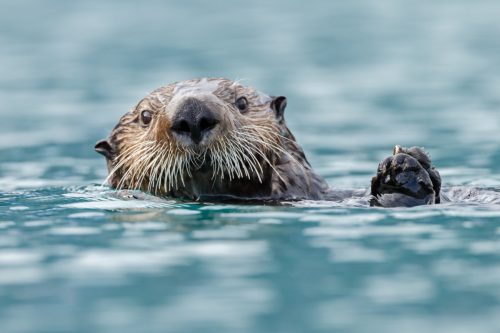
While many scientists believe that tool use among dolphins is a relatively new phenomenon, a 2017 study published in Biology Letters suggests that otters may have been using tools for millions of years. Sea otters frequently use rocks to break open well-armored prey, such as snails.
31. Frogs can freeze without dying.
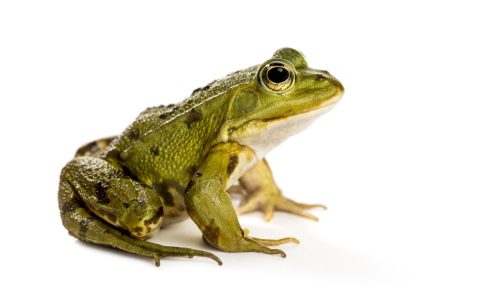
Why tolerate the cold when you could just freeze yourself solid? According to Kenneth Storey, a professor at Carleton University in Ottawa, frogs undergo repeated freeze-thaw cycles.
"We have false springs here all the time where it gets really warm and all the snow melts and then suddenly—bam—the wind comes from the north and it's back down to minus 10, minus 15 [Celsius], and they're fine," Storey told National Geographic.
32. Male horses have way more teeth than their female counterparts.

Male horses have about 40 permanent teeth, while females have just 36 to 40. According to the VCA Animal Hospital, the original purpose of these extra teeth was self-defense.
33. Koalas sleep up to 22 hours a day.
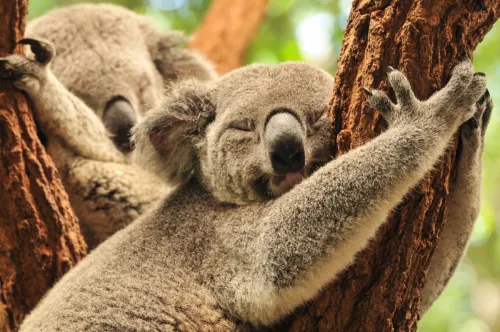
If you thought your cat was sleepy, just wait until you hear about koalas. According to the Australian Koala Foundation, these cuties sleep between 18 and 22 hours a day. The koalas' diets require a lot of energy to digest, which is why they've got to nap so much.
34. A group of ferrets is called a business.
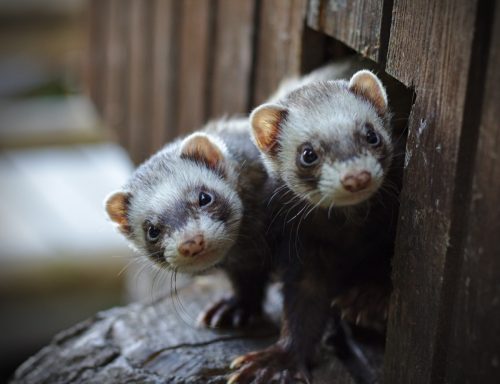
No, it's not because they're so professional—the word is a modernized form of "busyness," the term originally used to describe a group of these weasel-related mammals.
35. Octopuses can taste with their arms.
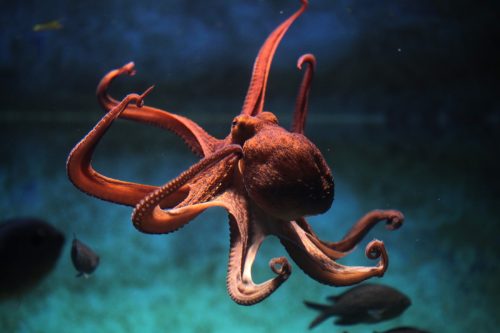
And yes, they are called arms, not tentacles. According to the Library of Congress, the animals can taste and grab with the suckers on their arms.
Even more impressive? Octopuses are capable of moving at speeds of up to 25 miles per hour.
36. Dolphins have names for one another.

You already know that dolphins are smart. But did you know that they even have their own names? One 2013 study published in PNAS found that bottlenose dolphins develop specific whistles for one another.
RELATED: 40 Ocean Facts That Will Blow You Out of the Water.
37. Reindeer eyes turn blue in the winter.
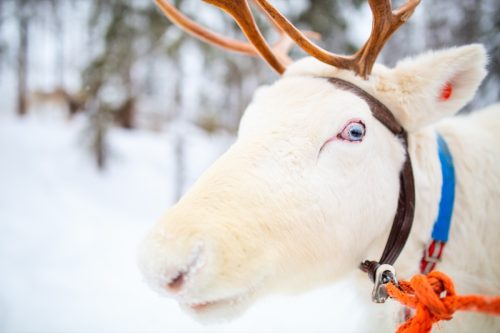
Reindeers have truly blue eyes—but only in the winter! According to the Biotechnology and Biological Sciences Research Council, "the eyes of Arctic reindeer change color through the seasons from gold to blue, adapting to extreme changes of light levels in their environment."
The change in color impacts how light is reflected through the animals' retinas and improves their vision.
38. Giraffes have purple tongues.

Scientists believe that giraffes have dark tongues so they don't get sunburns while they eat. The animals' tongues are also around 20 inches long.
39. Alligators will let manatees swim ahead of them.

In busy waters, manatees will nudge alligators to get in front, and alligators generally oblige. How polite!
40. Sloths can take up to a month to completely digest a single leaf.

Everything about life is slow for these sleepy mammals. Most sloths will only have a bowel movement once a week, and it can take them up to 30 days to completely digest a single leaf.
For comparison, it takes the average human 12 to 48 hours to ingest, digest, and eliminate waste from food.
41. Adult cats only meow at humans.
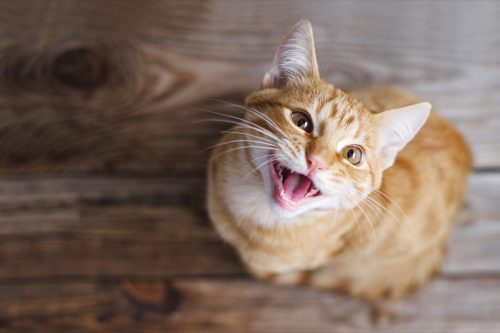
You probably know that cats love to talk to their humans. But did you know you're unlikely to see your feline friend interact the same way with another cat? That's because, other than kittens meowing at their mothers, cats don't meow at other cats.
42. Elephants and humans have similar self-soothing techniques.
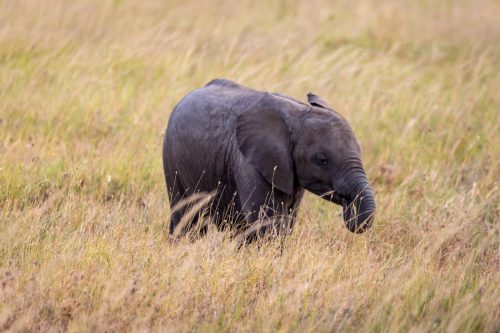
Baby elephants will suck their trunks to comfort themselves. The babies do it for the same reason humans suck their thumbs (it mimics the action of suckling their mothers).
43. Female bats give birth to babies that weigh up to a third of their weight.
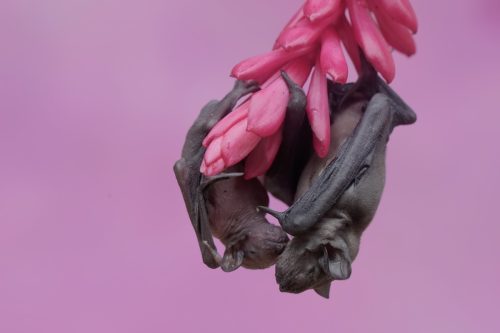
According to Bat Conservation International, bats give birth to babies—known as pups—that can weigh as much as one-third of the mother's weight. If that doesn't sound like a lot, imagine a person giving birth to a baby that weighed 40 pounds.
44. Painted turtles survive winter by breathing through their butts.

Not all creatures head to warmer climates when it gets cold out, and that means they need to learn to survive in chilly conditions. Painted turtles need to adapt to frozen ponds, which restrict their access to the air above the water. They do that by breathing through their butts—specifically, the all-purpose orifice called the cloaca.
Thanks to a process called cloacal respiration, the turtles can get oxygen directly from the water around them.
45. Dogs have way fewer taste buds than humans.

While you may think that Fido has the same dinnertime experience as you do, he's actually got a much different taste bud arrangement. Humans have about 9,000 taste buds, while dogs have only around 1,700.
And while they can identify the same four taste sensations as people, dogs are not fond of salt.
46. Otters have the world's thickest fur.
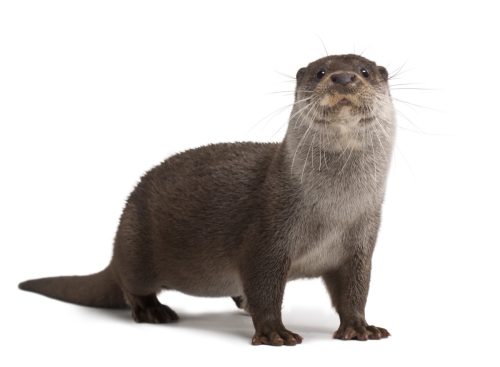
Otters are thought to have up to one million hairs per square inch of their bodies. Their fur consists of two layers and is designed to trap a layer of air next to their skin so their skin doesn't get wet.
47. Alligators can grow for more than 30 years.
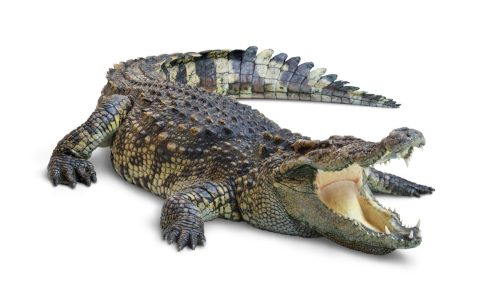
According to a 2018 study published in Copeia, alligators often haven't hit their full size until age 33.
48. A group of owls is called a parliament.
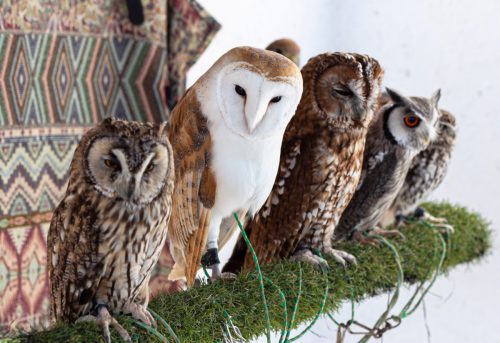
Their legislative powers, however, are still up for debate.
49. Snow leopards don't roar.
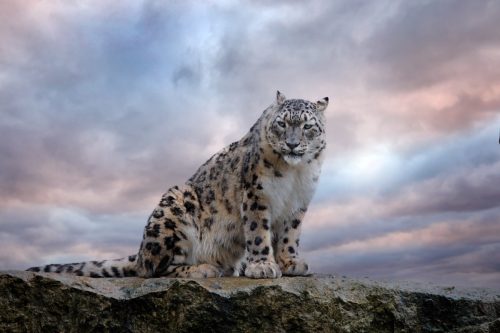
Snow leopards have less-developed vocal cords than their fellow large cats, meaning that they can't roar, but make a purr-like sound called a chuff instead.
For a 2010 study published in the Biological Journal of the Linnean Society, scientists researched why some cats have a higher-pitched meow than others. They found that it's not size that determines a kitty's call, but habitat.
RELATED: 55 Fascinating World Facts You Need to Know.
50. Axolotls can regenerate their parts.
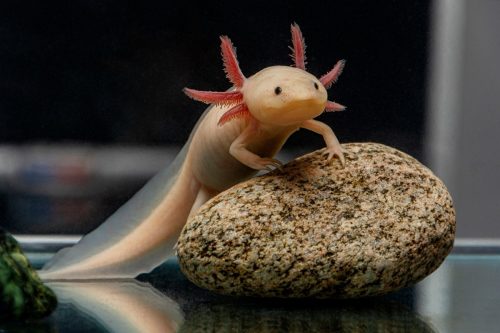
Salamanders are the only vertebrates that can replace their skin, limbs, tail, jaws, and spines at any age. On the flip side, humans can regenerate lost limb buds as embryos and fingertips as young children.
51. A group of rhinos is called a crash.

Individual male rhinos are referred to as bulls and females as cows.
52. Squirrels will adopt orphans.

Turns out, squirrels have an intense motherly instinct. One 2010 study by researchers at the University of Guelph found that the animals will take in the orphaned pups of their late family members.
"Social animals, including lions and chimpanzees, are often surrounded by relatives, so it's not surprising that a female would adopt an orphaned family member because they have already spent a lot of time together," said lead researcher Andrew McAdam, an evolutionary biologist. "But red squirrels live in complete isolation and are very territorial. The only time they will allow another squirrel on their territory is the one day a year when the females are ready to mate or when they are nursing their pups."
53. Giant anteaters have two-foot tongues.

According to Guinness World Records, it's the longest tongue of any known mammal.
54. Cows have best friends.

Cows have stronger social ties than you might think. One 2013 study conducted by researchers at the University of Northampton found that when cows were separated from their BFFs, their heart rates increased as a sign of stress.
55. Moths experience love at first scent.
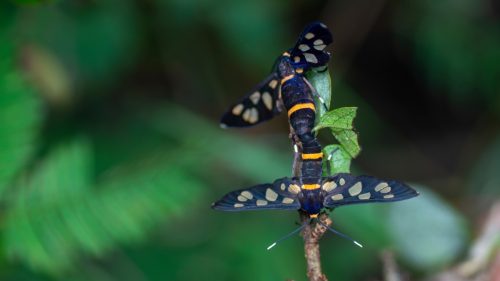
When a male moth catches a whiff of a female moth, he'll travel miles to find her—based on her scent alone. According to the experts at Audubon, "They don't know what the female sounds like, or even what she looks like. But when they smell her, boy, do they know it, and they use her seductive musk to track her down."
56. Horses have distinct facial expressions.
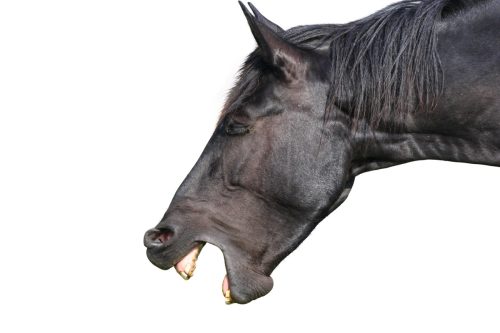
Horses can make 17 facial movements, which is three more than chimps and only 10 fewer than humans, according to a 2015 study published in PLOS One.
57. Deer can run up to 35 miles per hour.

Yes, white-tailed deer can hit top speeds of 35 miles per hour. Think that's fast? Reindeer can run up to 50 miles per hour.
58. An octopus has three hearts.

Octopuses have two more hearts than you do. Two hearts are used to pump blood to their gills, while the third brings blood to the rest of their body. If that's not enough, they also have nine brains.
59. Some worms can jump.
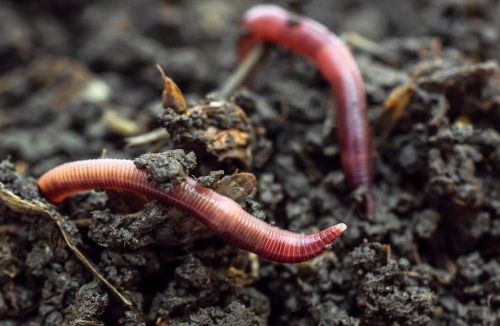
Certain species of the Amynthas worm, which have recently been identified in the Midwestern United States, can jump and detach their tails when disturbed.
60. Crocodiles can live up to 100.
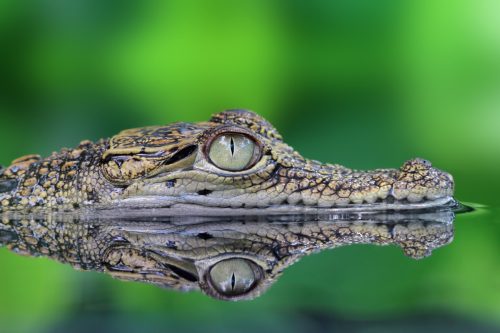
Nile crocodiles can live for a full century. And they can do a lot of damage over the course of those 100 years: Approximately 200 people die every year from Nile crocodile attacks.
61. Ravens are masters of deception.
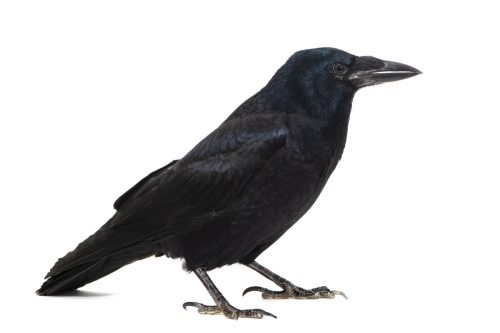
Just how smart are ravens? A 2002 study published in Animal Behaviour found that these tricky birds have the ability to deceive each other.
The entire corvid family—which includes crows, ravens, and jays—is exceptionally intelligent. These birds have also been known to play pranks on one another and tease other animals.
RELATED: 39 Facts About Storms That Will Make You Run for Cover.
62. Rats laugh.

While scientists don't exactly think they have a sense of humor, rats will make a laugh-like sound when tickled.
63. Tigers have striped skin.
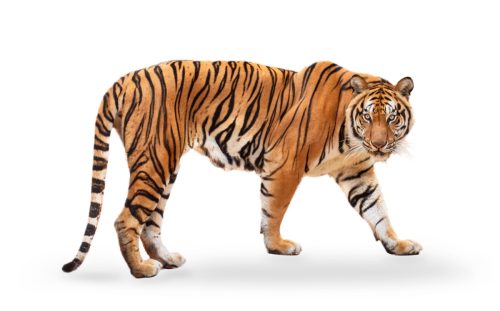
You might think it's just their fur, but no, tigers have striped skin, too. And speaking of those stripes, much like our fingerprints, they're unique to every tiger.
64. Cats recognize their own name but choose not to respond.

Sorry, cat owners, you're not just being paranoid: Your pet does know when you're calling their name, and they're ignoring you anyway.
In a 2019 study published in Scientific Reports, researchers discovered that while cats can distinguish their own names, they don't necessarily feel obligated to respond.
65. Cows produce more milk when listening to slow music.
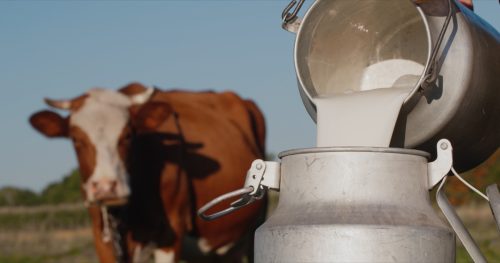
Call it a moo-d. Researchers at the University of Leicester School of Psychology found that cows produced 1.54 more pints per day—a 3 percent increase—when they were played slow music, as opposed to more upbeat tunes.
66. Butterflies taste with their feet.
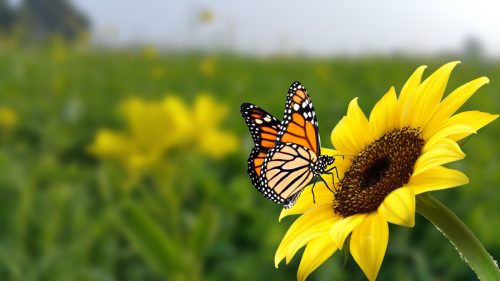
Not only do butterflies taste using their feet, the receptors on their legs are also 200 times stronger than human taste buds. When a butterfly lands on a plant, they use these sensors to determine whether or not what they're standing on is edible.
67. The spur-winged goose's diet makes it poisonous.

Don't plan on eating a spur-winged goose if you happen to come across one during your travels. These birds, natives of sub-Saharan Africa, have flesh that's often poisonous to humans, thanks to their diet of blister beetles, which contain the deadly cantharidin poison.
68. Vampire bat saliva keeps blood from clotting.
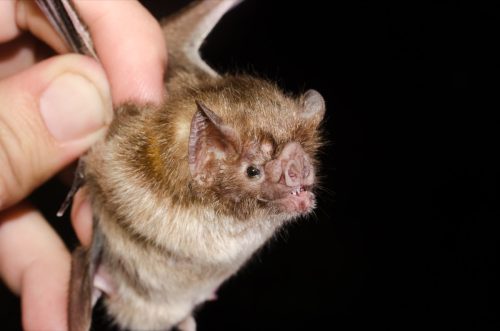
Vampire bats do more than just bite their prey—they also keep the other animal's blood from clotting. Their saliva works as an anticoagulant so that the blood can flow freely as they feed.
Here's another fun fact: The protein in the anticoagulant has been nicknamed "draculin." Spooky!
69. Wombat poop is cube-shaped.

Wombats use their droppings to warn other animals to stay off their turf. Luckily, their cube-shaped poop makes it easy to see that a spot is governed by wombats, as the little squares tend to stay put more easily than spherical droppings would.
70. Giraffes with darker spots are more dominant.
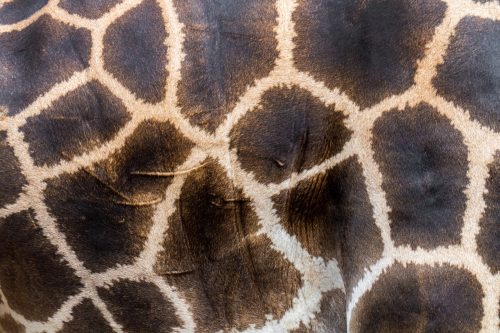
You can learn a lot from the color of a giraffe's spots.
According to a 2019 study in Animal Behaviour, giraffes with darker spots are more dominant than giraffes with lighter spots. And not only that: Dark-spotted giraffes also tend to be more solitary.
71. Orcas can learn to speak dolphin.

Groups of killer whales have their own dialects that are further influenced by the company they keep.
A 2014 study published in The Journal of the Acoustical Society of America revealed that orcas housed with bottlenose dolphins over a long period of time were able to replicate the dolphins' language.
72. Queen mole rats make other female mole rats infertile.

To ensure her dominance, the queen mole rat works to make it impossible for other female mole rats to have litters. In fact, the queen can produce a substance in her urine that renders other female mole rats infertile.
RELATED: 63 National Park Facts About America's Most Beautiful Destinations.
73. Horned lizards squirt blood from their eyes.
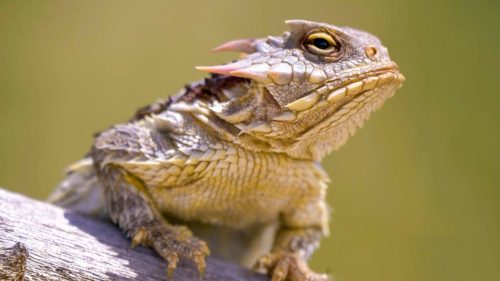
The horned lizard has a pretty impressive trick for evading predators. When one finds itself in a perilous situation, it can squirt a stream of blood from its eyes. The predator then runs off, because, well, wouldn't you?
74. Catfish have taught themselves how to kill pigeons.

Relax, pigeons—it's not all catfish. But yes, in southwestern France, a group of European catfish have learned to kill pigeons, launching themselves out of the water to grab the sunbathing birds.
75. Only female mosquitos bite.
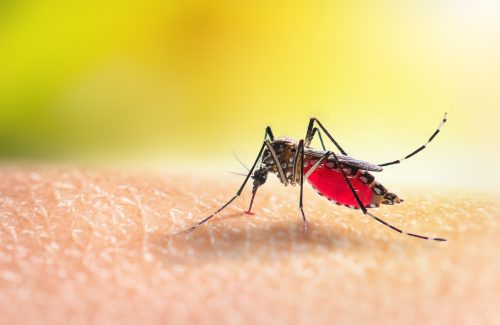
It's true: Only female mosquitos bite people for the sake of enjoying a blood meal. Without it, they won't be able to produce eggs. Unfortunately, mosquitoes also often carry viruses or parasites that they can pass on to those they bite.
According to the Centers for Disease Control and Prevention (CDC), mosquitos are notorious for spreading diseases like malaria, dengue, West Nile, yellow fever, Zika, chikungunya, and lymphatic filariasis, making them the deadliest animal in the world.
76. Roosters have developed natural earplugs.
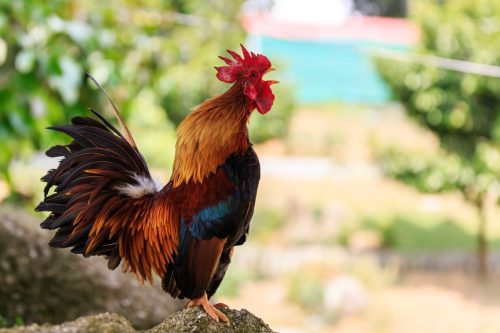
Researchers at the University of Antwerp discovered that just about half of a rooster's eardrum is covered in soft tissue. When they tilt their head fully back, another bit of material helps cover the area completely. This is likely to protect them from the sound of their loud crowing, which averages over 100 decibels (about the same as running a chainsaw).
77. Fleas can jump over 200 times their body length.

That's right: fleas have been observed jumping upwards of 13 inches, which is about 200 times their own body length.
78. Some tortoises weigh more than bears.
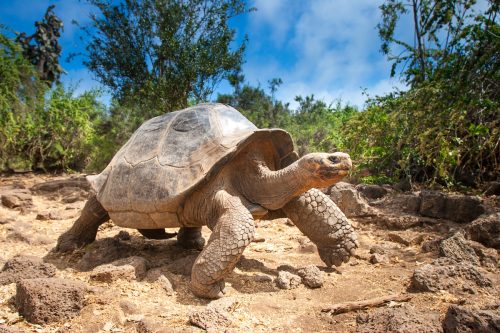
The giant tortoise from the Galapagos Islands can weigh as much as 550 pounds—roughly the same size as a brown bear. These impressive creatures are therefore the world's largest tortoises. Their size allows them to store more water and fat, which helps them survive during long ocean crossings and in drought-like conditions.
79. The mantis shrimp is one of the loudest animals in the world.
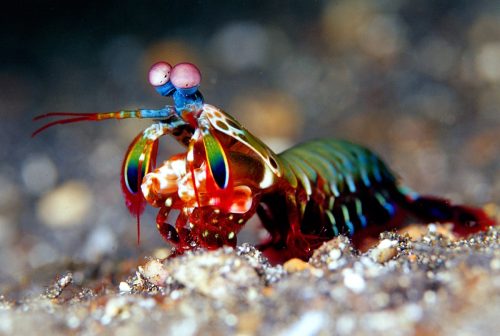
The mantis shrimp is only a few inches long, but it can make sounds of up to 200 decibels. They do this by snapping their claws shut loudly enough to stun their prey, giving them the opportunity to catch and devour their next meal.
80. Hummingbirds are the only birds known to fly backward.
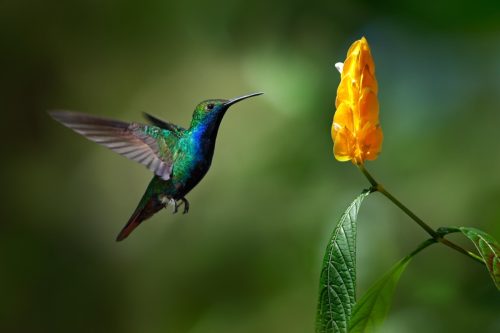
Not only that, but these amazing creatures can also fly upside down, and they have their wing structure to thank for that. Unlike others in the species, hummingbirds have a ball-and-socket joint, or rotator cuff, which provides them a much greater span of movement. This also allows them to hover in one place, which is typically how they eat.
81. Primitive crocodiles could gallop.

If you think crocodiles aren't frightening enough, consider this: They used to gallop. While modern-day crocodiles can move surprisingly fast, giant crocodiles during the Cretaceous period could use their legs to chase and kill dinosaurs.
Wrapping Up
That's it for our list of fascinating animal facts, but be sure to check back with us soon for even more trivia!
- Source: https://www.cell.com/current-biology/fulltext/S0960-9822(19)31469-1
- Source: https://www.doi.gov/blog/13-facts-about-bats
- Source: https://polarbearsinternational.org/news-media/articles/why-polar-bears-have-black-skin
- Source: https://bmcevolbiol.biomedcentral.com/articles/10.1186/1471-2148-5-59
- Source: https://www.usgs.gov/news/californias-beaches-mallard-ducks-have-learned-surf-food
- Source: https://science.sciencemag.org/content/334/6063/1664.full
- Source: https://jeb.biologists.org/content/215/5/736
- Source: http://rsos.royalsocietypublishing.org/content/2/6/150150
- Source: http://rsbl.royalsocietypublishing.org/content/13/3/20160880
- Source: https://aaep.org/horsehealth/importance-maintaining-health-your-horses-mouth
- Source: https://www.fda.gov/animal-veterinary/animal-health-literacy/fun-ferret-facts
- Source: https://www.loc.gov/everyday-mysteries/zoology/item/can-an-octopus-get-to-know-you/
- Source: https://www.pnas.org/doi/10.1073/pnas.1304459110
- Source: https://www.scielo.br/j/bjmbr/a/cv8SZN9QjLgp9WH3hSnpWCx/
- Source: https://www.aspca.org/pet-care/cat-care/common-cat-behavior-issues/meowing-and-yowling
- Source: https://www.akc.org/expert-advice/lifestyle/can-dogs-taste/
- Source: https://meridian.allenpress.com/copeia/article-abstract/104/4/843/196439/Determinate-Growth-and-Reproductive-Lifespan-in
- Source: https://onlinelibrary.wiley.com/doi/abs/10.1111/j.1095-8312.2010.01520.x
- Source: https://www.audubon.org/news/tracking-down-love-male-moths-use-scent-find-females
- Source: https://journals.plos.org/plosone/article?id=10.1371/journal.pone.0131738
- Source: https://www.sciencedirect.com/science/article/pii/S0003347202930563
- Source: https://www.nature.com/articles/s41598-019-40616-4
- Source: https://www.sciencedirect.com/science/article/pii/S0003347219302453
- Source: https://asa.scitation.org/doi/abs/10.1121/1.4893906
- Source: Fighting the World’s Deadliest Animal
- Source: Fighting the World’s Deadliest Animal





















